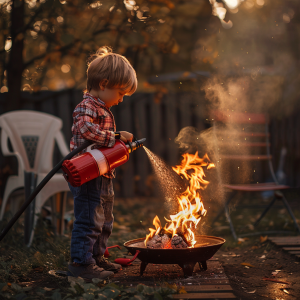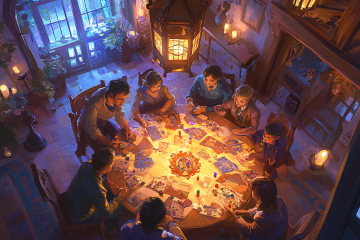Ah, the joys of teaching kids about preparedness! It’s like trying to convince them that broccoli is just tiny trees waiting to be devoured by a mighty dinosaur. But hey, if I can make it out of a Nashville hotel hallway in nothing but a black slip and my wits, I can certainly guide you through teaching your children about being prepared for whatever life throws their way.
Make Preparedness Fun for Kids
Remember how you felt when you learned something new and exciting as a kid? That sense of wonder and accomplishment? Channel that! Turn preparedness into a game. Start with a simple treasure hunt around the house. Create clues that lead to items in your emergency kit. Not only does this familiarize them with what’s in the kit, but it also shows them where everything is kept. And who doesn’t love a good treasure hunt?
Try Story Time with a Twist
Kids love stories. So why not weave in some preparedness lessons? Think of a gripping tale where the heroes (your kiddos) need to navigate a power outage, a snowstorm, or even a zombie apocalypse. Okay, maybe not zombies (unless your kids are into that), but you get the idea. Each challenge in the story should teach a new skill: how to find safe drinking water, the importance of having flashlights and batteries, or even basic first aid.
Experiment With Hands-On Practice
Ever tried explaining how to tie shoelaces without showing them? It’s nearly impossible, right? The same goes for preparedness skills. Have a family night where you practice things like using a fire extinguisher, setting up a tent, or purifying water. Let them get their hands dirty and figure things out. It’s one thing to talk about it, but doing it solidifies those skills.
Let Their Leadership Skills Shine Through
Give them a sense of responsibility. Assign roles during family drills – one can be in charge of the first aid kit, another for checking the food and water supplies, and so on. This not only teaches them leadership but also shows them the importance of teamwork.
Keep It Age-Appropriate

Let them practice, with supervision, of course
You wouldn’t hand a three-year-old a machete (I hope!). Tailor your lessons to their age. For younger kids, focus on basic concepts like what to do if they get lost. For older ones, you can dive into more complex topics like creating an emergency communication plan or learning basic coping with a crisis skills.
Have Regular Refreshers
Like anything, practice makes perfect. Make preparedness a regular part of your family routine and make it an everyday thing, not just a gloom and doom topic. Have quarterly drills, update your emergency kits, and revisit your plans. This keeps the information fresh and ensures everyone knows what to do without thinking twice.
Reward Their Efforts
Who doesn’t love a reward? Celebrate their achievements. Maybe after a successful drill, you all get to watch a movie, have a special treat, or go on a fun outing. Positive reinforcement goes a long way in making sure the lessons stick.
Lead by Example

Reward children’s efforts to embrace preparedness
Kids are like little sponges; they soak up everything we do. Show them that preparedness is important to you, too. Talk about it openly, stay calm during practice drills, and involve them in your own planning and prepping processes. Your actions will speak louder than any lecture ever could.
Teaching kids about preparedness is about empowering them. It’s giving them the confidence and skills they need to handle whatever comes their way. And hey, it might just save you from a future hotel hallway debacle of your own. Who knows? Maybe one day, they’ll be the ones teaching you a thing or two about staying calm and collected in a crisis. Now, that’s a story I can’t wait to hear!


